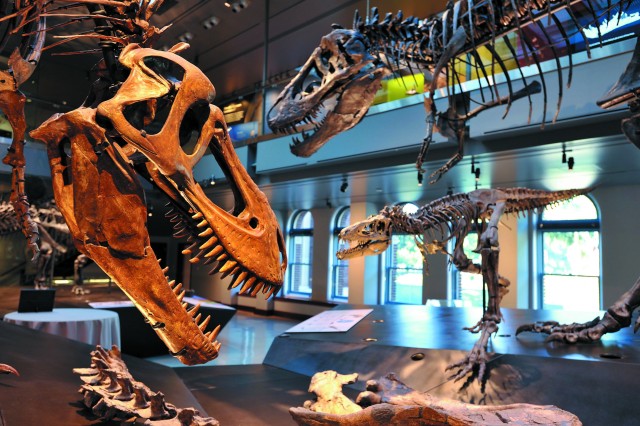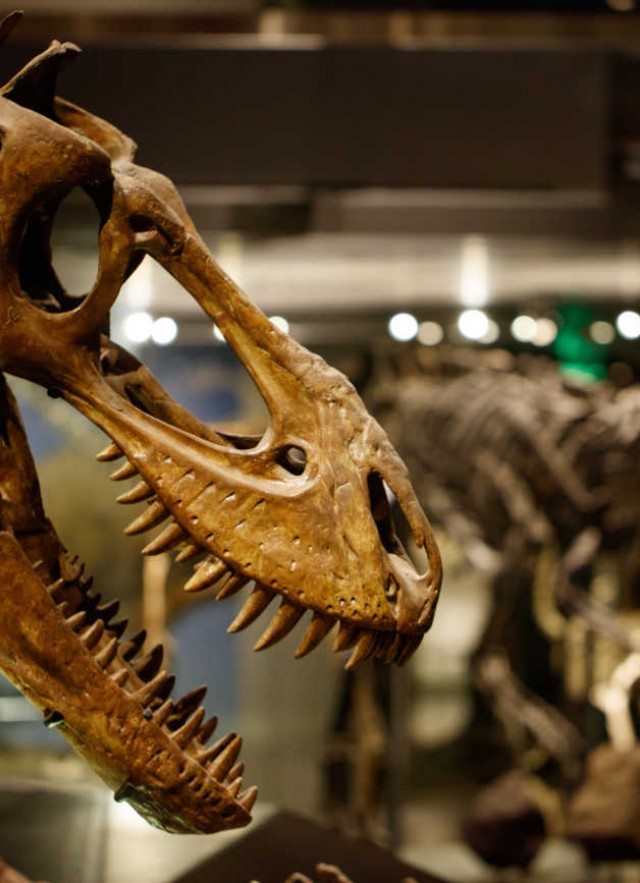
story
In this Photo Gallery, look closely at some of the most iconic Mesozoic creatures on display in our Dinosaur Hall.

In the Jane G. Pisano Dinosaur Hall, you can roam under, around, and above 20 mounted skeletons of the largest and most interesting dinosaurs and sea creatures to ever inhabit prehistoric Earth. Visitors can examine over 300 fossils, just like real paleontologists, to study dinosaurs and their ancient world!
In this Photo Gallery, take a closer look some of the most iconic Mesozoic creatures on display in our Dinosaur Hall. Below, find question prompts to get students looking closer at these amazing creatures-- either in these images, or during your next visit to the Museum!
What do you notice about this animal? What might that tell us about how the animal lived/survived?
Was this animal a carnivore/predator or an herbivore/prey? What do you see that makes you say that?